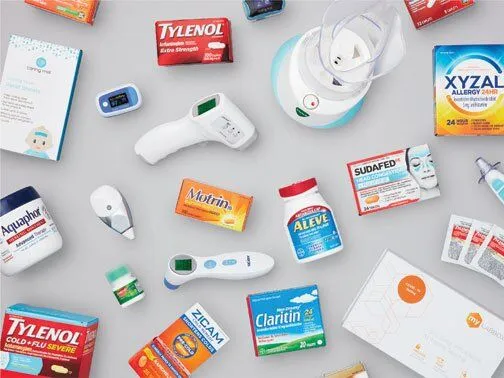Half of Americans leave FSA healthcare money on the table. Here are 10 ways to spend it.
If you have money sloshing around in a Flexible Spending Account, you may be feeling some pressure to spend it by December 31.
An FSA is a pre-tax fund for healthcare expenses, similar to a Health Savings Account. Industry estimates suggest more than 70 million Americans have one or the other.
“They’re both ways for people to stretch their healthcare spending a little further,” said Jake Spiegel, a research associate at the Employee Benefit Research Institute (EBRI), a nonprofit research firm.
But there is a key difference. HSA money carries over from one year to the next. Most FSA funds do not.
HSAs are paired with health insurance plans and belong to the covered individual, Spiegel said. FSAs, by contrast, are “accounts that don’t really exist on paper until the money actually needs to be spent,” he said. “They are technically owned by the employer.”
At year’s end, unused FSA money “technically goes back to the employer,” Spiegel said.

Many of us leave Flexible Spending Account funds on the table
Some FSA plans include a grace period of up to 2 ½ months, allowing the employee to spend the money in the next year. And some plans allow a portion of unused funds to roll over into the next year. This year, the maximum carryover is $610, or one-fifth of the annual contribution limit, $3,050. (Next year, the FSA contribution limit rises to $3,200.)
But many employees leave FSA dollars on the proverbial exam table. In a 2019 analysis of its own FSA database, EBRI found that 48% of accounts had money remaining at year’s end and that the average amount forfeited was about $370.
But here’s the good news: Even if you leave FSA funds unspent, you can still save money in the end. Because they are pretax dollars, FSA funds boost the employee’s spending power by the amount of tax they don’t pay. At a 25% tax rate, putting $2,000 into an FSA would yield $500 in savings.
“You could have a few hundred dollars left at the end of the year and still come out ahead,” Spiegel said.
If you need to spend FSA money now, America’s retailers are here to help.
Amazon has an FSA store. So does Walmart. There is even an actual FSA Store, an online clearinghouse for all things FSA-eligible.
“We have everything from your over-the-counter medicine to menstrual care products to high-end skin products to treat acne,” said Rachel Rouleau, chief compliance officer at FSA Store. “There are literally thousands of ways you can spend your FSA dollars.”
We, too, are happy to help you spend your FSA dollars. Here are 10 ideas.

Covid tests? Contact lenses? Yes, they are FSA-eligible
Covid tests. Yes, they are eligible, and lots of us are buying them right now.
Contact lenses. They are FSA-eligible. And if you wear them, you probably need more.
Pain relievers. It’s cold and flu season: this feels like a no-brainer.
Unpaid medical bills. Check that stack of bills. You may have some lingering copays from long-forgotten doctor visits.
Dentistry. You may or may not actually need to go to the dentist every six months, but if it’s been a year or more, then now may be the time.
Yoga. Fitness classes and apps may be FSA-eligible with a doctor’s authorization, according to Truemed, a company that partners with providers.
Air purifiers. Air purifiers are not, strictly speaking, FSA eligible, but they may be covered to treat a legitimate medical condition.
Ancestry kits. According to 23andMe, you should be able to use FSA funds to cover some or all of the costs of genetic testing. Find that cousin you didn’t know you had!
Don't slack on taxes:Your single largest payday may be a 2023 tax filing away. File early to get a refund sooner

An Oura Ring. These bands are said to track “over 20 biometric signals,” from temperature to heart rate to sleep quality, all from your finger.
A massage gun. According to FSA Store, a state-of-the-art Aura Revive Heated Massage Gun is “the tool you need and the pain reliever you deserve.”
More of your 2022 tax season questions answered
- 1099, W-4, W-2, W-9, 1040: What are these forms used for when filing your taxes?
- What are the 2022 US federal tax brackets? What are the new 2023 tax brackets? Answers here
- 2023 tax season guide for new parents: What to know about the Child Tax Credit, EITC and more
- IRS may owe you from 2020 taxes. Here's why and what you need to do to find out if you're owed
- What is OASDI tax on my paycheck? Here's why you and your employer pay this federal tax
- Do you have to report crypto on taxes? Yes. Here's what you should know about form 8949
- What is a 1098-E form? What you need to know about the student loan interest statement
- Tax season 2023: What exactly is the mileage rate? There's more than one.
- Is it better to pay someone to do your taxes or do them yourself? We'll help you decide.
- What is income tax? What to know about how it works, different types and more
- Is Social Security income taxable by the IRS? Here's what you might owe on your benefits
- Companies can deduct full cost of business meals on 2022 tax returns
- Who has to file a tax return: It's not necessary for everyone. Here are the rules.
- What is capital gains tax in simple terms? A guide to 2023 rates, long-term vs. short-term
- Best way to receive your 2023 tax refund? IRS says direct deposit. Here's how to do it.
- What is FICA? How much you contribute to federal payroll taxes.
- How much is the Child Tax Credit for 2023? Here's what you need to know about qualifying.
- A 30% national sales tax? Abolishing the IRS? What the FairTax Act of 2023 would do.
- The Inflation Reduction Act carves out an EV tax credit for 2023. Does Tesla qualify?
Disclaimer: The copyright of this article belongs to the original author. Reposting this article is solely for the purpose of information dissemination and does not constitute any investment advice. If there is any infringement, please contact us immediately. We will make corrections or deletions as necessary. Thank you.







